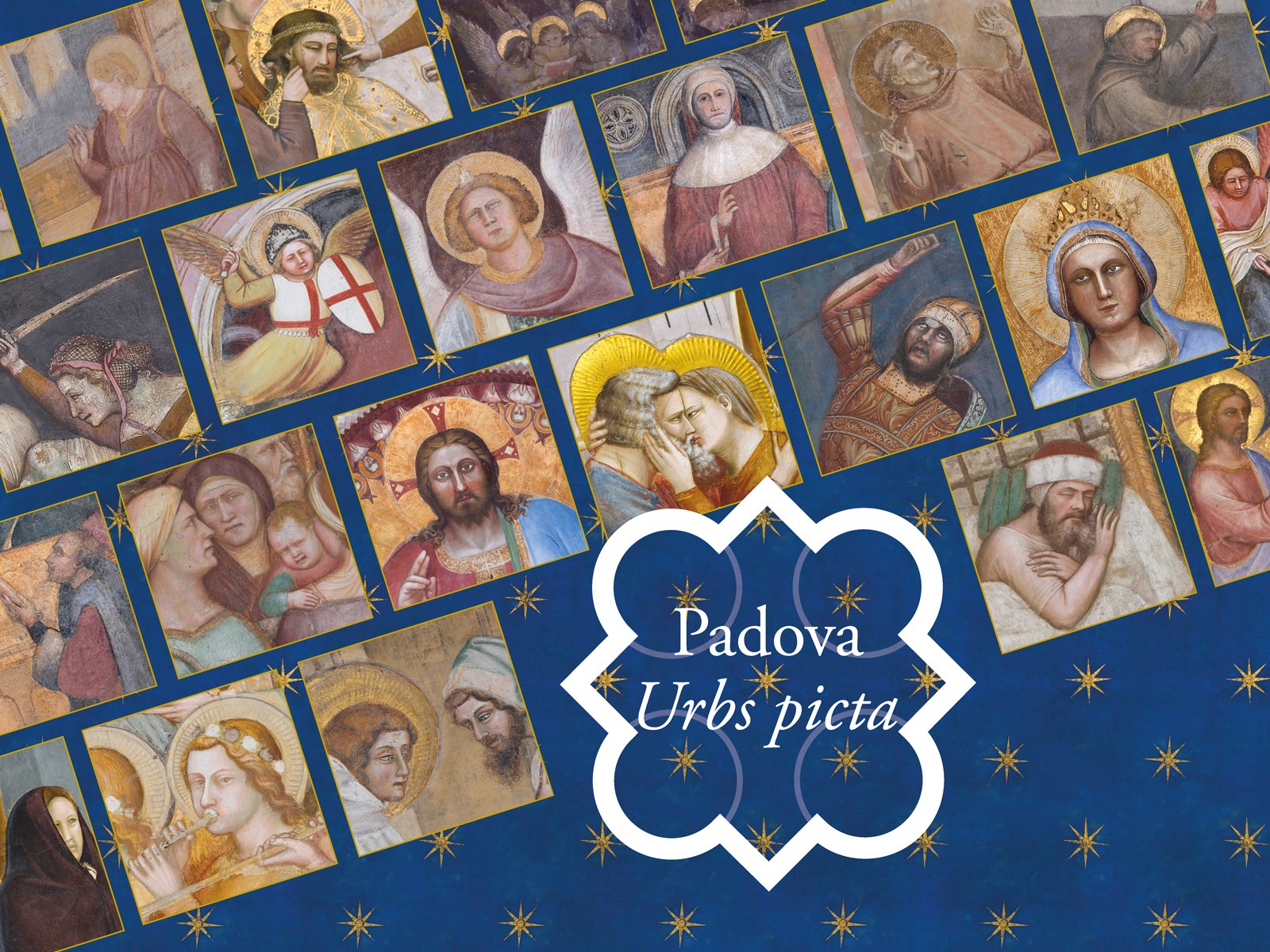City of Padova
An ancient city, cradle of universities and trade, located in the Veneto region in north-eastern Italy, it has always had a focus on art, culture and science.
Padua (Italian: Padova, Latin: Patavium, Venetian: Padoa) is better known as the city of St. Anthony and it is one of the most important art cities in Italy. It is the capital of Padova province and the economic and communications hub of the province. Padua’s population is 209’954 (2023).
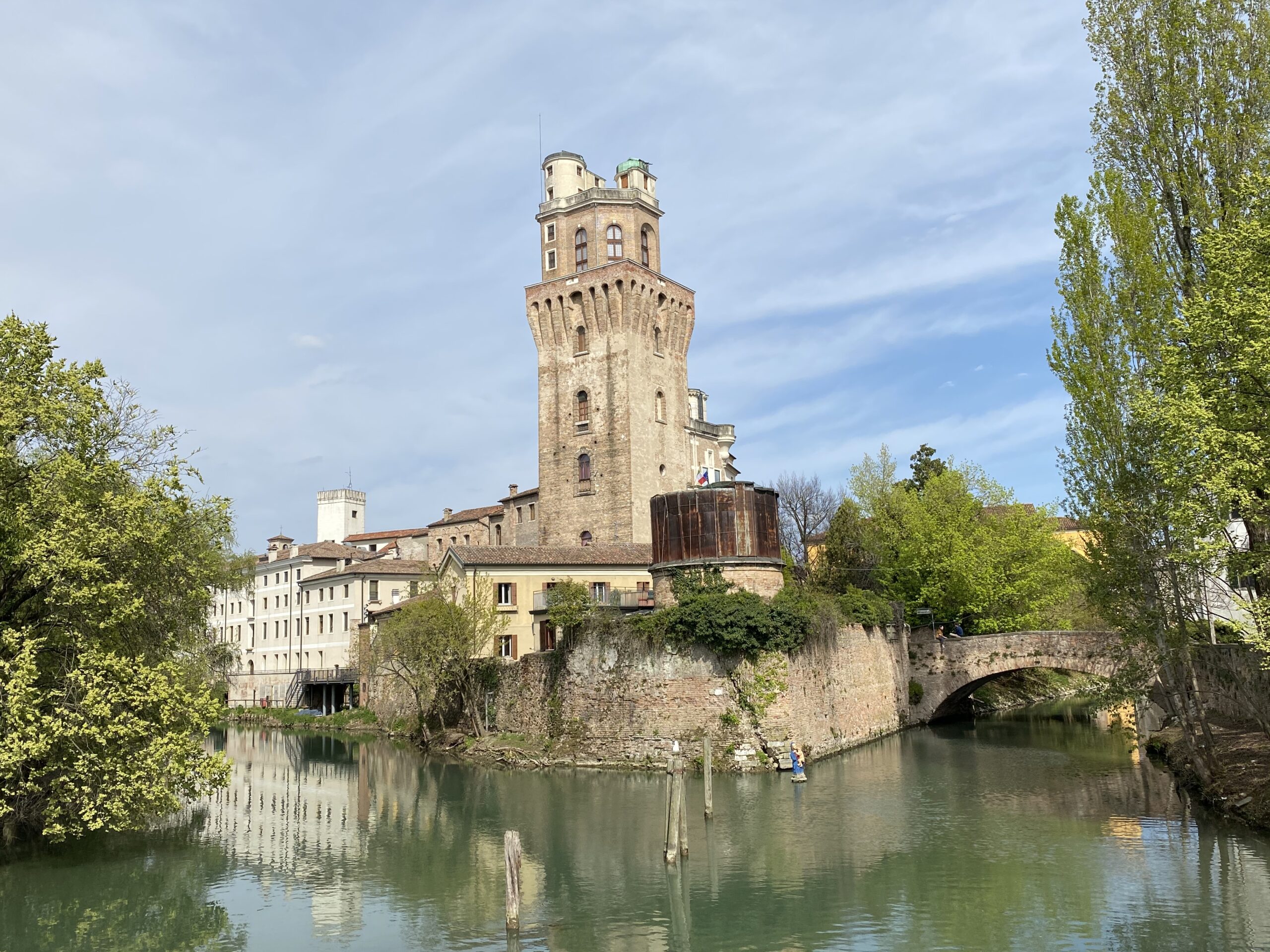
Padova stands on the Bacchiglione River, and Brenta river (which once passed inside the city) still touches northern districts, 40 km west of Venice and 29 km southeast of Vicenza. Its agricultural setting is the Pianura Veneta, the “Venetian plain”, to the city’s south west lies the Euganaean Hills, praised by Lucan and Martial, Petrarch, Ugo Foscolo, and Shelley.
The city is picturesque, with a dense network of arcaded streets opening into large communal piazze, and many bridges crossing the various branches of the Bacchiglione, which once surrounded the ancient walls like a moat.
Padova is the setting for most of the action in Shakespeare’s The Taming of the Shrew.
A city to be discovered on foot or by bicycle, with slowness and curiosity. A city with numerous attractions that are often little known: because apart from the Scrovegni Chapel, where Giotto painted one of his masterpieces, few people know all the museums, gardens, churches and monuments that Padua offers. This is why setting out to discover it can be a pleasant surprise.
Here are some highlights:
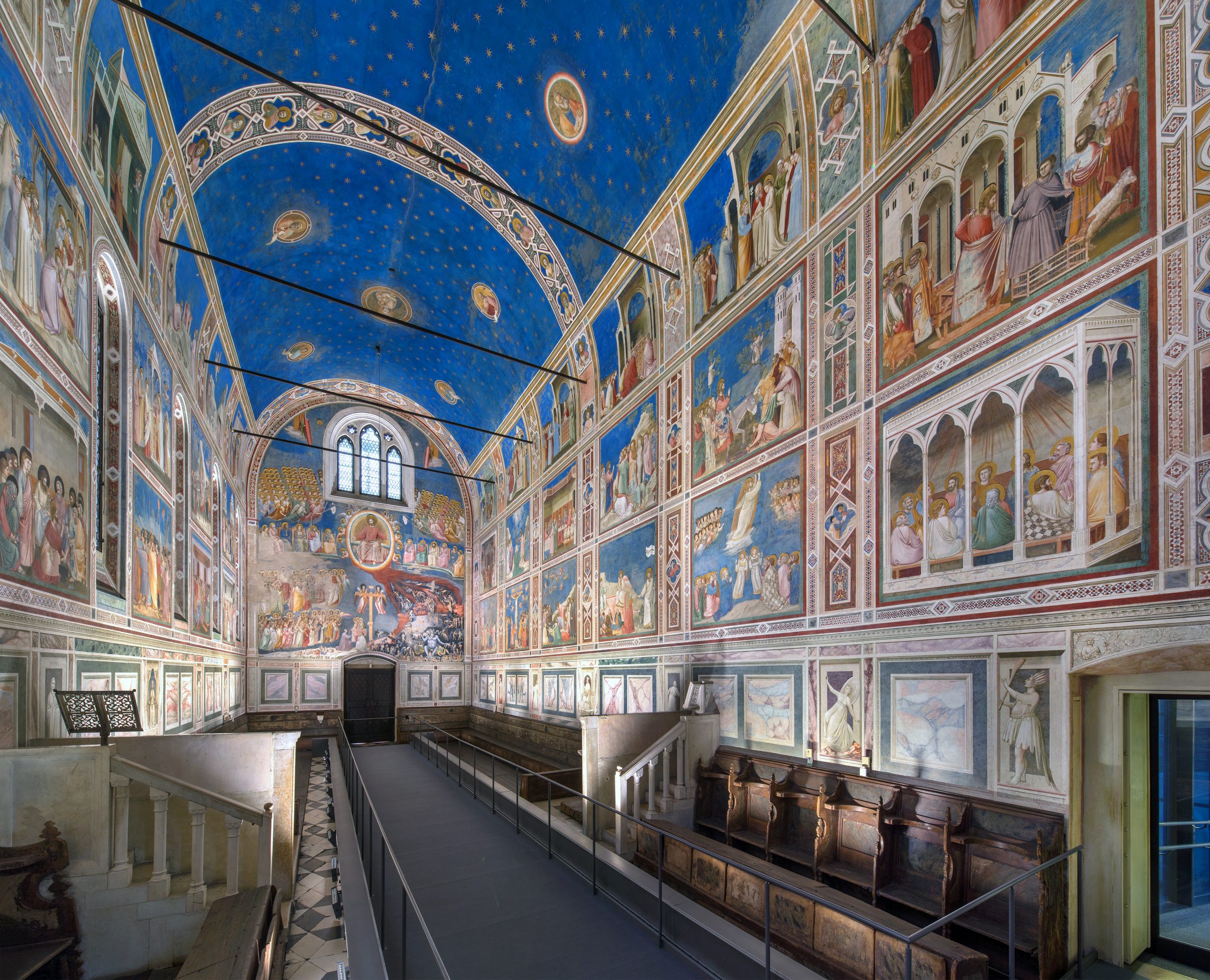
The Scrovegni Chapel in Padua
A distracted visitor passing in front of the building housing the Scrovegni Chapel could easily walk straight away thinking that there is nothing exceptional worth going in for. In reality, that ‘simple building’ as Giotto himself called it, houses the most important cycle of frescoes in the world.
Marvel as you admire the starry sky under which the episodes from the life of Joachim and Anne (panels 1-6), those from the life of Mary (panels 7-13) and the episodes from the life and death of Christ unfold.
Be a little more astonished when you think that it took Giotto only two years to complete it all. In 1303 he received the commission from Enrico Scrovegni and by 1305 he had already finished. Enrico wanted to build the Chapel in suffrage of the soul of his father, Reginaldo Scrovegni, who had much to be forgiven for. A banker and usurer, he was so famous and feared that he was placed by Dante in the inferno of the Divine Comedy. With the Scrovegni Chapel, Giotto began the revolution of modern painting.
Opening hours: all year round from 9.00 am to 7.00 pm.
Closed: Christmas, Boxing Day and New Year’s Day.
Ticket price: full price € 15 + €1 presale fee. This ticket also gives access to the Civic Museums and Palazzo Zuckermann. Entrance from Musei Civici, piazza Eremitani 8. Official website: Scrovegni Chapel
Please note: visits are to be reserved in advance, same day reservations cannot be made!
The University
Padua is home to one of the oldest universities in the world, which since the 13th century has seen a constant flow of eminent professors from the scientific world, such as Pietro d’Abano, Nicolò Copernico, William Harvey, Andrea Vesalio, Gabriele Falloppio, Galileo Galilei, Fabrizio d’Acquapendente and Giovan Battista Morgagni, to mention just a few.
The University of Padua takes pride in having established the first European botanical garden, the “Orto dei Semplici” (1545), the first permanent anatomical theatre in the world, the “Teatro Anatomico” (1595), and the first Italian University Library, the “Sala dei Giganti” (1629). Moreover, in 1678 the “Sacro Collegio dei filosofi e medici” (Holy University College of Philosophers and Physicians) awarded the first university degree in the world to a woman, the noble Venetian Elena Lucrezia Cornaro Piscopia.
The Anatomical Theatre, conceived by the famous pathologist Girolamo Fabrici d’Acquapendente, is preserved at Palazzo Bo, the ancient site of the University of Padua, where one can also visit the Aula Magna. In the nearby Sala dei Quaranta, so named for the forty portraits of foreign students, is the wooden chair from which Galileo taught mathematics and physics from 1592 to 1610.
Other places of special interest are the medieval Hall of Justice (Palazzo della Ragione), the Basilica of St. Anthony, Prato della Valle, the biggest square in Europe built in the XVII century with a unique elliptical conformation, and the Botanical Garden.
Opening hours and ticket prices for Palazzo Bo
From Monday to Friday the “Palazzo Bo – Historical tour” is available, with a guided tour of the Courtyards of the “anatomical kitchen” and the Anatomical Theatre.
The Aula Magna Galileo Galilei, the Sala dei Quaranta, the Sala di Medicina and the Sala di Giurisprudenza can also be visited.
On Saturdays, Sundays and holidays, the “Palazzo Bo and Gio Ponti’s 1900s” tour is available, which includes guided tours of the Rector’s Courtyards, the Ancient Archives, the “Anatomical Kitchen” and the Anatomical Theatre. The Basilica, the Aula Magna Galileo Galilei, the Sala dei Quaranta and the Sala di Medicina can also be visited.
Ticket price: 8 € historical tour; 15 € Giò Ponti’s ‘900.
Official website of Palazzo Bo
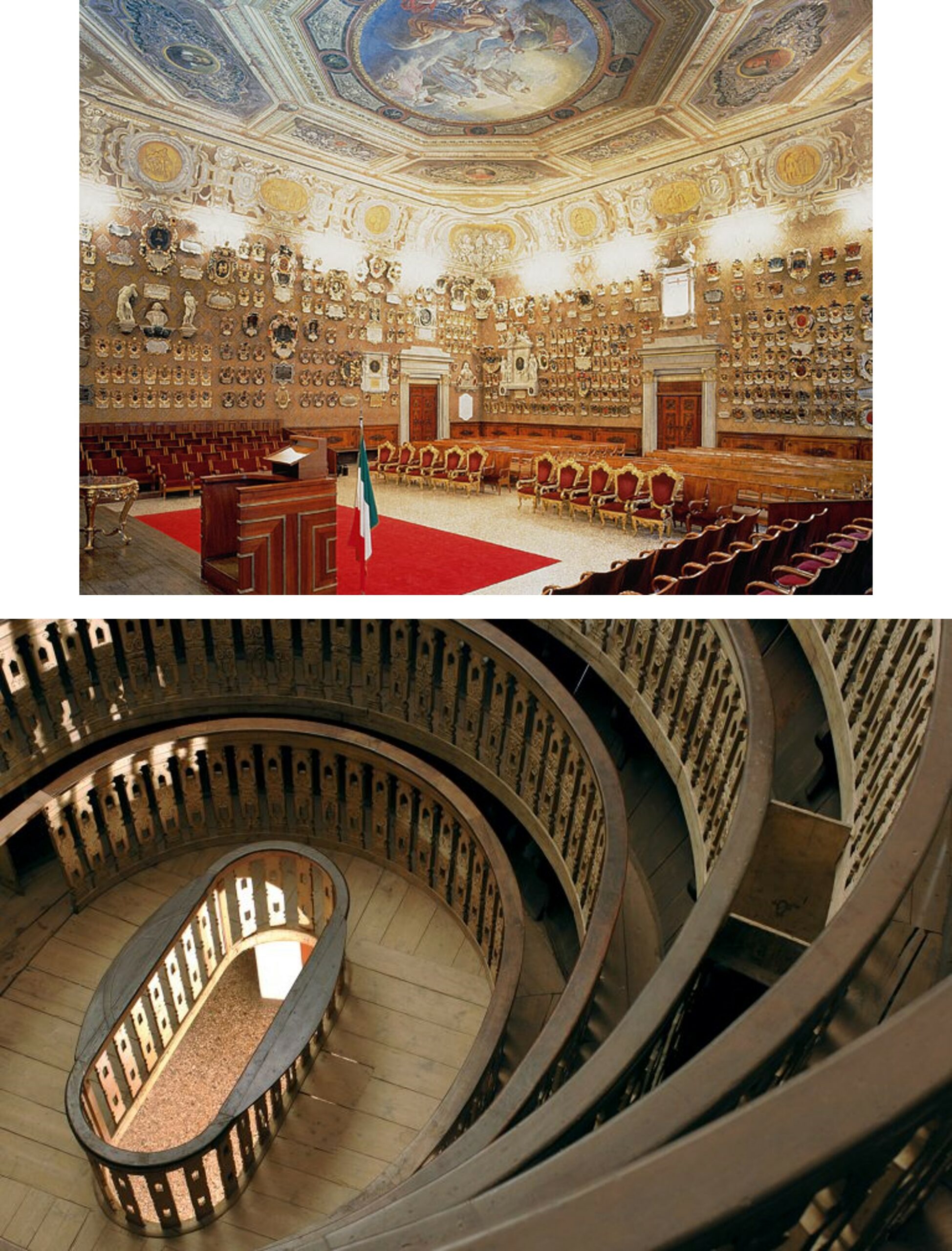
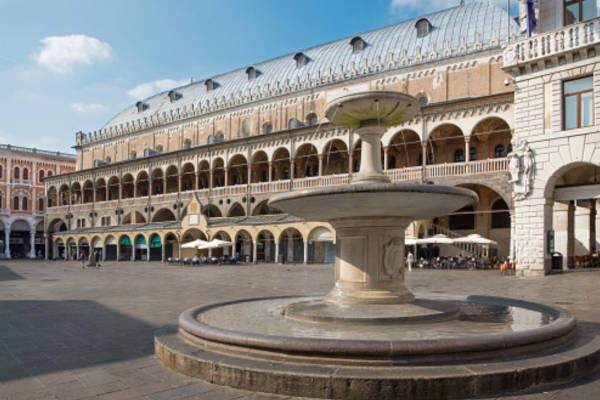
Piazza delle Erbe e della Frutta in Padua
For centuries, Piazza delle Erbe has been the place in Padua designated for the market. The names used in time to define this large space have always indicated its origin and commercial function: ‘Piazza della Biada’ (“Fodder square”) ‘Piazza Del Vino’ (Wine square). Actually, even the names of the streets surrounding the square betray their commercial function: innkeepers, butchers, greengrocers, each corner had a specialisation. Behind Piazza delle Erbe, divided by Palazzo della Ragione, is the other commercial square in Padua: it is Piazza della Frutta. Again, the name betrays its original origin and function (Fruit square), although it now houses a market where clothes are almost exclusively sold.
The two squares are joined by the ‘Volto della Corda’ or ‘Canton delle busie’, a covered passageway so called because here liars, bankrupts, cheaters and debtors were hit on the back with a rope. The ropes always hung from five stone rings embedded in the wall as a warning. The corner below the ‘Face of the Rope’ is called ‘Canton delle busie’ (corner of lies) because this is where merchants held their negotiations. Still visible today are the white stones with the ancient Paduan measures, a reference to prevent vendors from cheating customers.
Palazzo della Ragione (Hall of Justice)
The most imposing palace and symbol of Padua overlooks Piazza delle Erbe: it is Palazzo della Ragione, which for centuries was the seat of the Court, from which it takes its name. The building, with its great hall on the upper floor, is reputed to have the largest roof unsupported by columns in Europe; the hall is nearly rectangular, its length 81.5m, its breadth 27m, and its height 24 m. The walls are covered with allegorical frescoes: the pictorial cycle inside the palace is one of the largest in the world: zodiacal, astrological, religious and animal motifs follow one another, symbolising the activities of the city at different times of the year and the intervention of the palace judges to settle matters.; the building stands upon arches, and the upper storey is surrounded by an open loggia. The Palazzo was begun in 1172 and finished in 1219. The hall on the upper floor can seat up to 1500 persons.
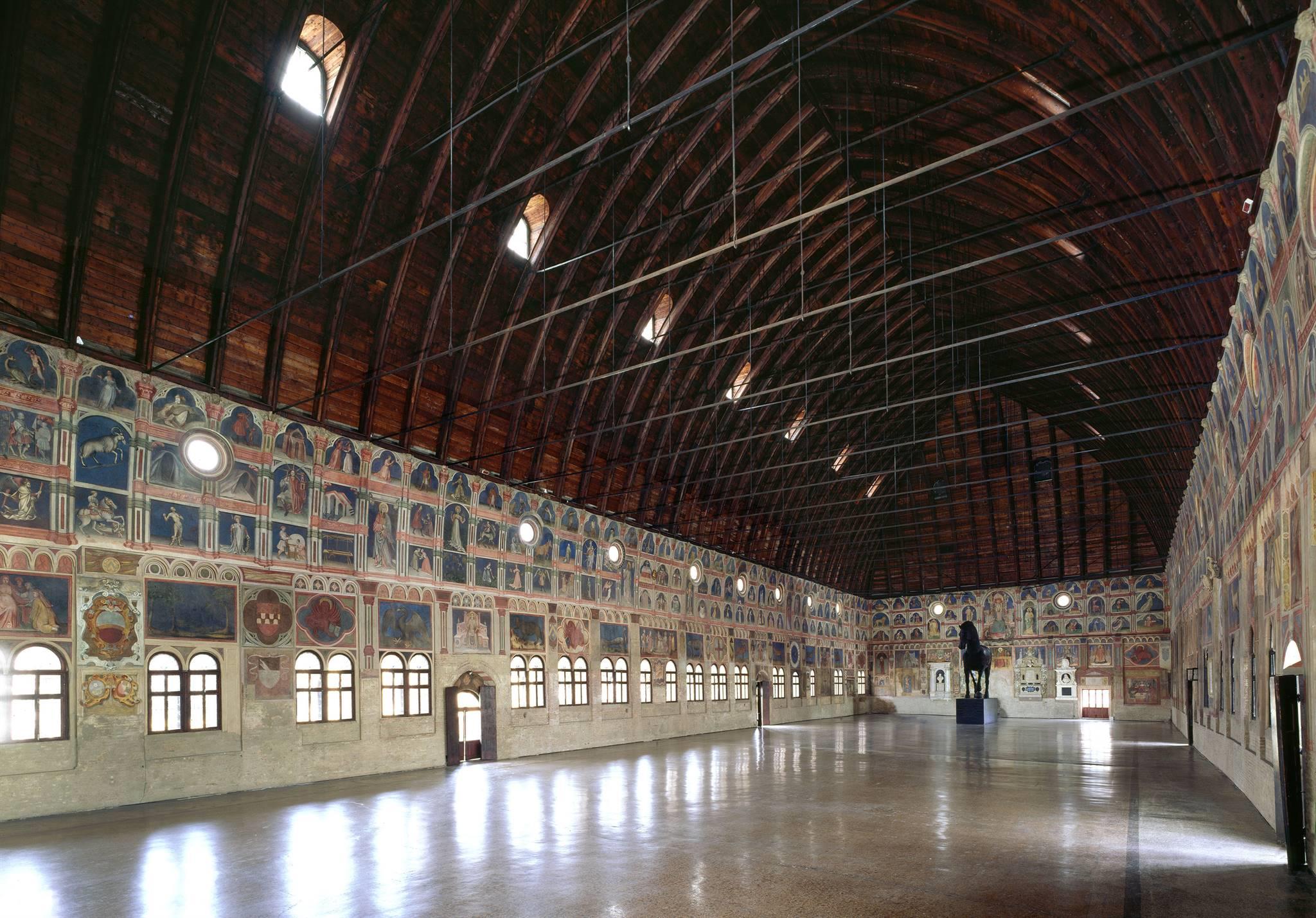
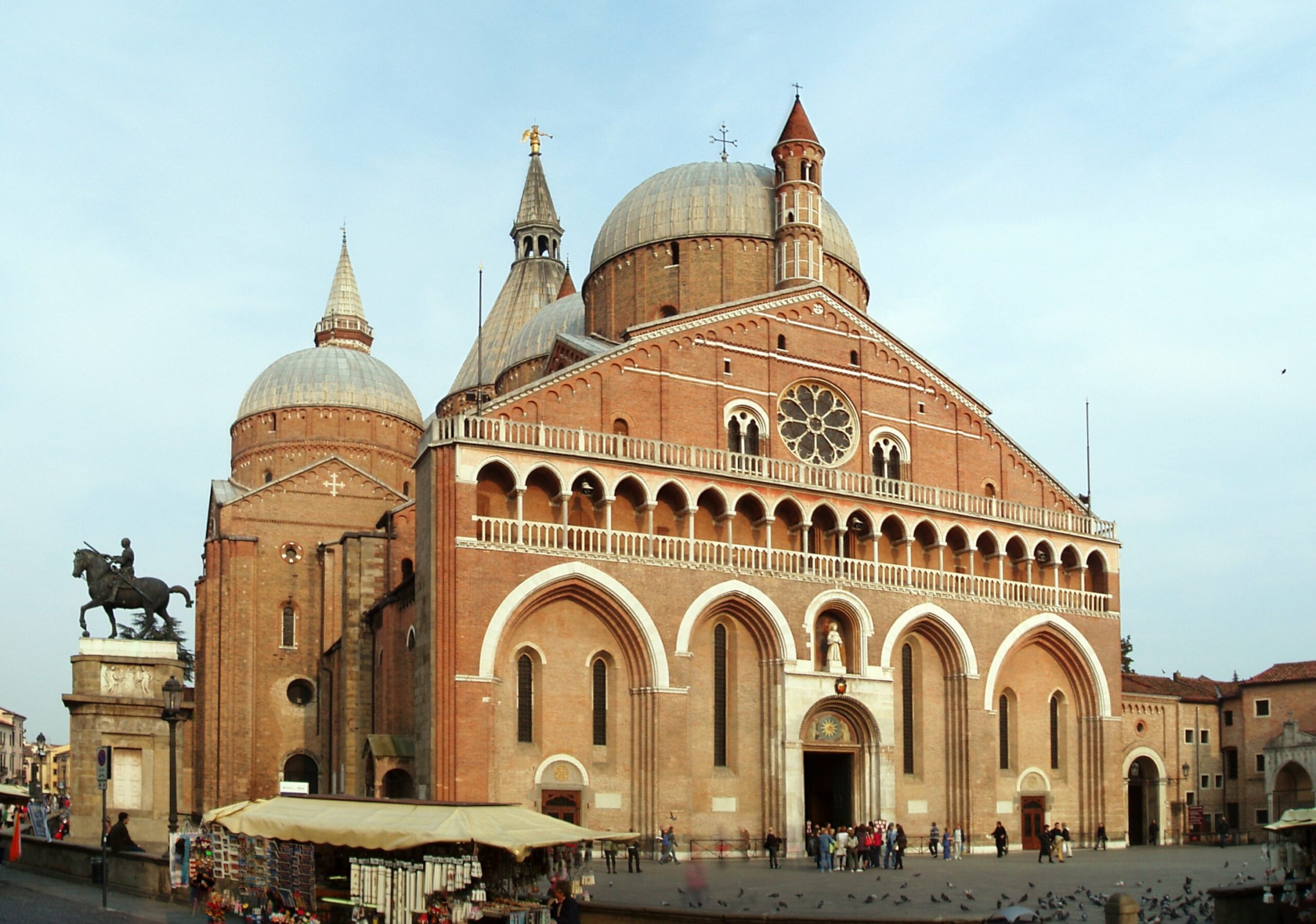
The Basilica of St. Anthony
Paduans call St Anthony ‘The Saint’, without adding a name. This makes one realise not only the affection but also the importance for Padua of the Basilica that houses St Anthony’s relics. The destination of a non-stop pilgrimage that culminates with the procession on 13 June, the Basilica di Sant’Antonio is also worth a visit for the presence of many masterpieces of Italian art. The first thing one notices is the coexistence of different styles due to successive interventions: the Romanesque façade, the Gothic ambulatory with its seven chapels, the Byzantine domes and the Moorish bell towers. Inside, starting from the right, there is the Chapel of Gattamelata and the Chapel of St James frescoed in 1300 by Andriolo de Santi, one of the greatest Venetian architects and sculptors of the time. Next is the Chapel of the Crucifixion and then the Chapter House, with a fragment of the Crucifixion attributed to Giotto. The ‘Treasure of the Basilica’ with the Saint’s relics is in the centre of the Deambulatory. In the square in front of the basilica, not to be missed is the equestrian monument to Gattamelata, a bronze statue by Donatello, an authentic revolution in the history of art: it was the first large equestrian statue to be detached from other
architectural elements.
Opening hours: 6.20 am – 7.45 pm Saturday and Sunday it always closes at 7.45 pm, after the last Mass.
Ticket price: free of charge.
How to get there: Piazza del Santo. From Prato della Valle it’s a 10-minute walk.
Official website of the Basilica di Sant’Antonio
Prato della Valle
Prato della Valle (88620 square metres) is second in total size only to Moscow’s Red Square. To understand how big it actually is, one only has to think that it is formed by a central, completely green island, called Isola Memmia in honour of the podestà who commissioned the work.
Surrounding the island is a canal about 1.5 km in circumference, surrounded by a double row of numbered statues (78) of famous people from the past.
Prato della Valle has always been the centre of life in Padua: here there was a large Roman theatre and a circus for horse racing. Two of the city’s four patron saints, St Justina and St Daniel, were martyred here. In the Middle Ages, fairs, jousts and public festivals were held here. Today in Prato della Valle tourists and Paduans stroll, cycle, sunbathe in the summer or stay up late at night. After years of neglect, the Piazza has finally regained its centrality in the life of Padua.

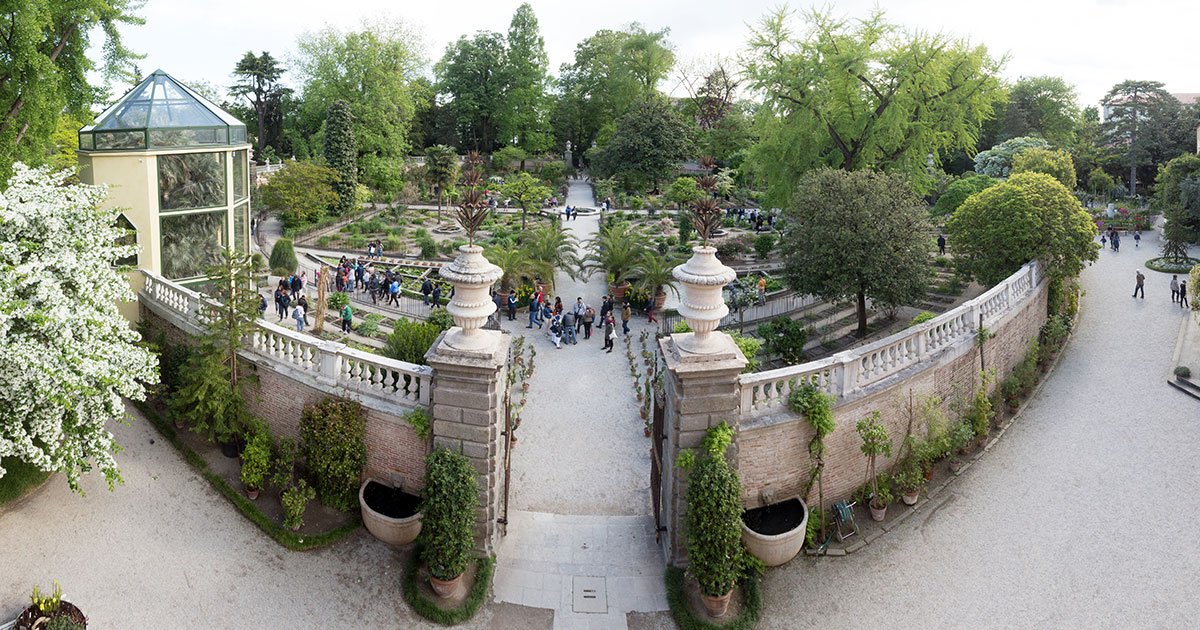
The Botanical Garden
Few people know that Padua has played a fundamental role in the study of medicinal plants and the introduction of many exotic plants to Europe. The Botanical Garden of Padua was established in 1545 for the cultivation of medicinal plants, which then constituted the vast majority of ‘simples’, i.e. medicines that came directly from nature.
At the time, there were no medicines, and those plants were so precious that thefts occurred every night despite the penalty of imprisonment or exile for those who committed them. This necessitated the construction of the circular wall that still today identifies the botanical garden of Padua as a circular closed garden. Most of the herbs and plants were important to the powerful Venetian Republic, which had trade relations with all the then known countries. A number of illustrious professors who had studied and translated the Greek medical works of Tephrastus, Aristotle and Galen put the use of these herbs into practice. A centuries-old tradition culminated in 1997 with the inclusion of the Botanical Garden of Padua in the UNESCO World Heritage list. Today there are around 6,000 specimens of 3,500 botanical species and four wonderful greenhouses that reproduce different climates with the aim of preserving many of the world’s plants.
Opening hours and ticket prices for the Botanical Garden
April to September
Tuesday – Sunday 10 a.m. – 7 p.m. (last admission 6.15 p.m.)
Closed: Monday weekdays
Cost of ticket: 10 €
Official website of the Botanical Garden
“PADOVA URBS PICTA”
The eight sites of Urbs Picta, Giotto’s Padua, which in 2021 became part of the Unesco Heritage, can be visited with just one single ticket. They include Giotto’s Scrovegni Chapel fresco cycle, considered to have marked the beginning of a revolutionary development in the history of mural painting, as well as other fresco cycles of different artists, namely Guariento di Arpo, Giusto de’ Menabuoi, Altichiero da Zevio, Jacopo Avanzi and Jacopo da Verona. The ticket can be purchased online at the dedicated website, or in paper copy at the various IAT points throughout the municipality.
And to be guided in your visit to discover the frescoed cycles of the fourteenth century is now available a new application, conveniently downloadable on your mobile phone.
Padova Urbs Picta is the official smartphone app of the Municipality of Padua, which accompanies citizens and visitors to the sites of the World Heritage site, offering a rich experience of knowledge and fun to discover the masterpieces of Giotto and other artists of the fourteenth century. Thanks to the interaction of images, texts, maps, stories and music, the app can be a tool for enriching and guiding between the frescoed masterpieces and the places in the city that preserve them.
